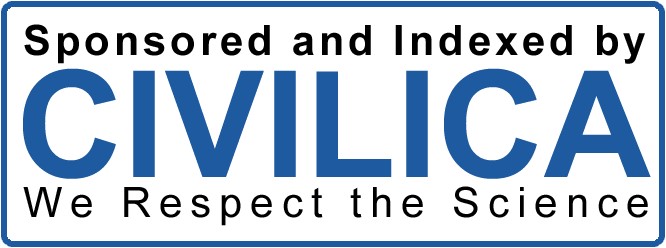Developing a storytelling package based on ancient tales and its impact on the cognitive and social skills of slow-learning children
Keywords:
Storytelling package, old tales, cognitive skills, social skills, slow-learning childrenAbstract
A slow learner is a child who learns less than his or her peers and usually has misunderstandings while learning and cannot learn things quickly and accurately. Each child has his or her own pace of learning, some children naturally learn faster but others do not. Slow learners make up about 13.6% of the total population and this group of children does not have any specific physical or external symptoms and, except in academic matters and complex mental activities where they may fail, they can act independently and succeed in other aspects of life.Storytelling, especially using ancient tales, plays an important role in strengthening children's cognitive and social skills. Late learners cannot learn complex material. They are usually anxious, have low self-esteem and poor attention skills. They have difficulty transferring what they have learned to practical situations or situations in everyday life. These students live in the present; that is, they are not forward-looking and do not have long-term goals. Late learners cannot progress at the same pace as regular students and are not able to learn everything that is expected of regular students. In fact, late learners do not master the content of the lessons during their time in school. Late learners cannot study at the level of progress that attentive students make. They have poor memory, their attention span is short, and they cannot focus on one subject for a long time. The aim of the present study is to develop a storytelling package based on ancient tales and examine its effect on the cognitive and social skills of slow-learning children. Therefore, since childhood relationships have a significant impact on adulthood and children's lack of desirable levels of personal skills cause numerous problems in their future, personal skills training is considered as prerequisite skills for formal education and skills of preparation for entering society. Given that the resources in this regard are limited and few, and in the existing studies, a single protocol and educational package based on storytelling for slow-learning children have not been found, therefore, investing in the future of the slow-learning child should be done by providing interventions that will increase his skills during his school years, especially in elementary school. Therefore, the main issue in this research is what are the characteristics of the storytelling package based on ancient stories? Does the package influence the increasing cognitive and social skills of slow-learning students in the first elementary school?
Method
The research method was a mixed (qualitative-quantitative) one, with the qualitative method being through semi-structured interviews and the quantitative method being semi-experimental with a pre-test and post-test design with a control group. The statistical population in the qualitative section included university psychology professors, specialists and experts in the field of children's literature in Jahrom city, who were selected through purposive sampling and interviews to the saturation level of 10 people, and in the quantitative section, it included slow-learning students in the first grade of elementary school in Jahrom city, who were selected through purposive sampling with a sample size of 30 people. Storytelling package training based on ancient tales was implemented for 30 sessions for slow-learning students in the experimental group. The quantitative data collection tools included the Wechsler Intelligence Scale-V (WISC-V) and the Gresham and Elliot (1990) Social Skills Questionnaire. In the qualitative section, the coding method was based on coding the main themes and coding the sub-themes based on the stories extracted from the interview, and the multivariate analysis of covariance statistical method was used to analyze the data.
Results: Based on the analysis of information in the qualitative section, a storytelling package based on ancient tales was developed for slow-learning students in the first grade of elementary school, including: the development of cognitive skills and the development of social skills in 30 sessions. For the development of verbal skills, 5 stories (sub-topics) were selected over 10 sessions; for the development of cognitive skills, 5 stories over 10 sessions; and for the development of social skills, 5 stories over 10 sessions were selected based on the interviews conducted. Teaching a storytelling package based on ancient tales influenced improving the subscales of cognitive skills (verbal comprehension, visual-spatial, fluid reasoning, working memory, processing speed) and the subscales of social skills (self-control, empathy, assertiveness, cooperation) of slow-learning students in the first grade of elementary school. Conclusion: Therefore, developing and teaching a storytelling package based on ancient tales effectively improved the cognitive and social skills of slow-learning elementary school children and can be used as an efficient approach to improving the capabilities of this group. Artistic activities such as storytelling and painting are mental-psychological interventions that activate the lower parts of the brain, which in turn plays a role in making the higher parts of the brain more effective. Storytelling creates complex interactions between different parts of the brain. Children also learn through storytelling to give new cognitive responses to situations and to function more adaptively in response to environmental changes. In fact, artistic activities such as storytelling and painting, by coordinating different parts of the brain, affect the children's executive functioning system and the inhibition system, allowing the child to better control his impulses and respond with higher reasoning ability and processing speed and more effectively in facing new situations.
Downloads
Published
Submitted
Revised
Accepted
Issue
Section
License
Copyright (c) 2025 نرجس رضائی کوچی (نویسنده); مریم اساسه (نویسنده مسئول); لیلا کاشانی وحید, مریم برزگر (نویسنده)

This work is licensed under a Creative Commons Attribution-NonCommercial 4.0 International License.





